The United States, Germany, and France have experimented with tail-sitter aircraft. Designed to have vertical takeoff and landing (VTOL) capabilities, these aircraft did not make it past the experimental stage. Military planners wanted these aircraft to be able to operate from small, dispersed airfields instead of large, potentially vulnerable main operating bases.
In the 1940s, the United States and other allied air forces studied VTOL tail-sitter aircraft as a potential solution to the threat of Soviet attacks. The idea was that these jets could operate from roads, small airfields, and even ships instead of from large bases.
Convair and Lockheed Receive Contracts to Develop VTOL Tail-Sitter Aircraft Designs
In 1947, the US Air Force and Navy awarded contracts to Convair and Lockheed to explore vertical takeoff and landing (VTOL) technologies using tail-sitter aircraft designs. Convair developed the XFY-1 Pogo, while Lockheed created the XVF-1. Both aircraft were powered by the Allison YT40-A-14 turboprop engine, which combined two T38 gas turbines to drive a standard gearbox. This gearbox powered a pair of three-bladed, coaxial propellers—two propellers mounted on the same axis, one inside the other, rotating in opposite directions.
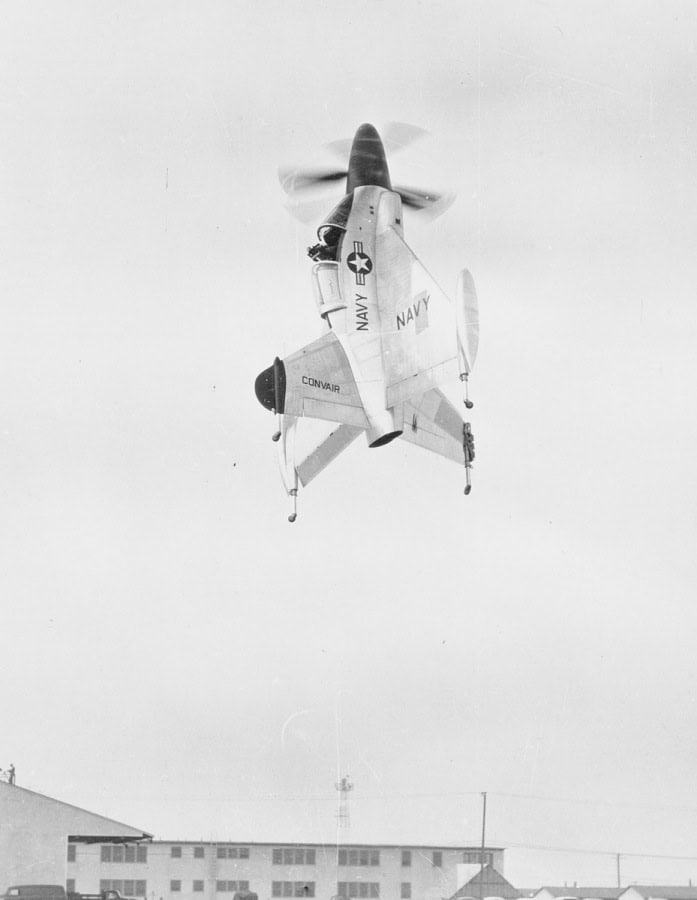
Both tail-sitter aircraft could take off vertically, hover, transition to horizontal flight, and then return to vertical for landing. However, designers and pilots encountered similar problems with both designs. Pilots experienced control and stability problems with both. Perhaps the most significant issue was determining their rate of descent when landing.
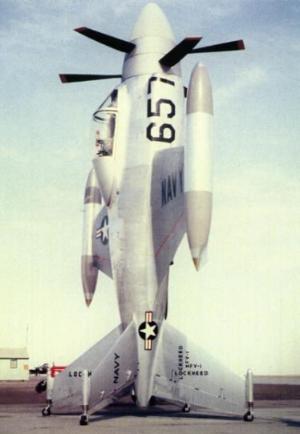
Convair and Lockheed only built one prototype each. Eventually, after multiple technical problems and the need for specially trained pilots, both programs were canceled by 1955.
Ryan X-13 Tail Sitter Designed For Use on Submarines
Another tail-sitter aircraft was the Ryan Aeronautical X-13 Vertijet. In 1947, the US Navy awarded Ryan a contract to study the concept of a VTOL fighter that could operate from a submarine.
Ryan designed an unmanned demonstration aircraft with an Allison J33 jet turbine engine. It had a ball-mounted exhaust nozzle to provide control while hovering. Engineers then converted a B-47 fuel tank into a cockpit and attached it to the engine. On 24 November 1953, pilot Peter Girard took off in the first-ever manned hovering flight in a jet aircraft.
Eventually, as with many experimental aircraft projects, funding ran out, and the Navy canceled it, but that was not the end of the concept. The US Air Force then became interested in the idea of a tail-sitter aircraft and, in 1954, awarded Ryan Aeronautical a contract to build two demonstrators, which they called the X-13 Vertijet.
US Air Force Revives Ryan X-13 Project
As with the earlier ideas, the Air Force was interested in operating the aircraft from minimal, widely dispersed airfields. Ryan also designed a trailer that could tilt vertically for takeoffs and landings.
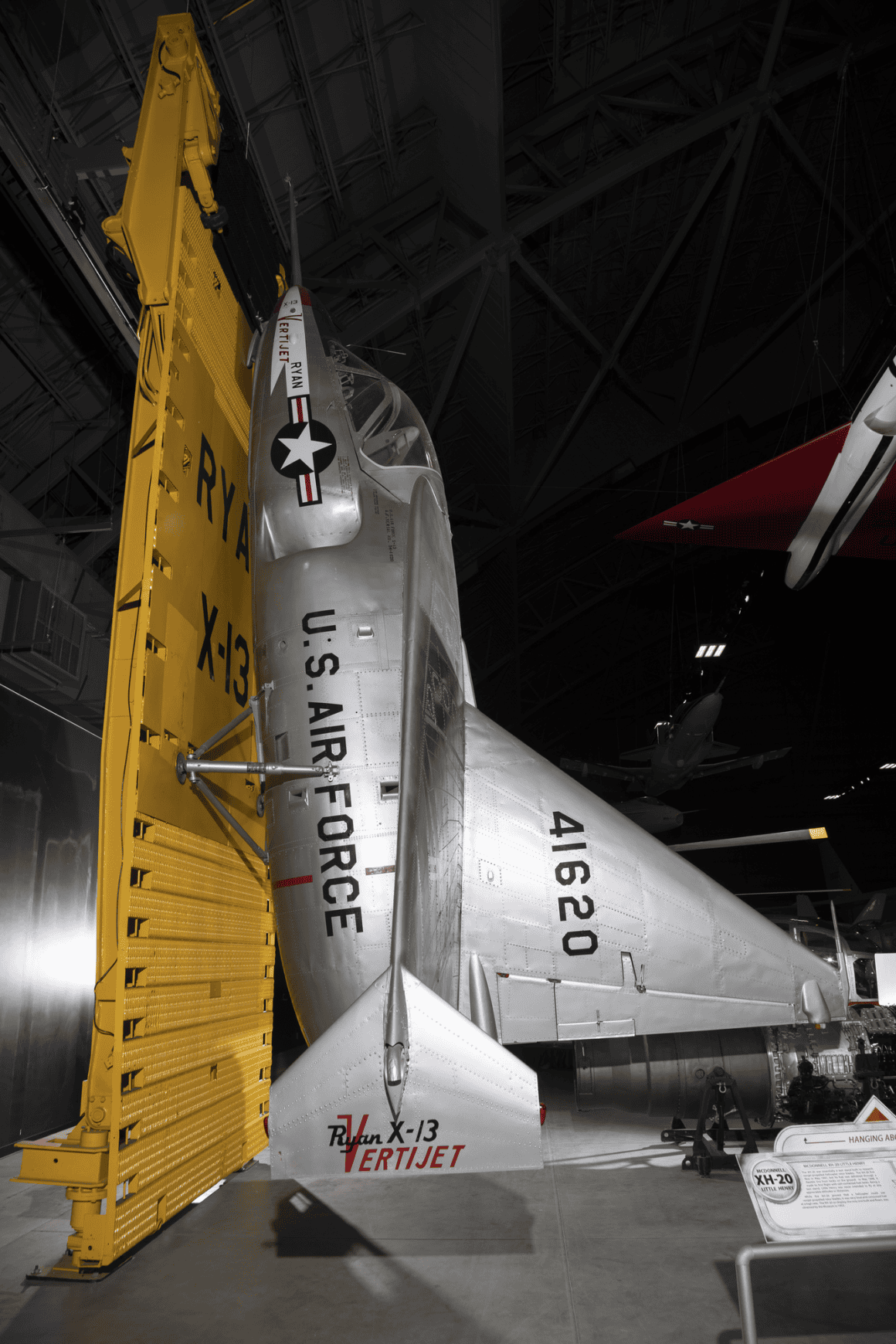
The aircraft was attached via a hook to a cable prior to taking off. Takeoffs and landings were complex. Once the pilot applied enough throttle, the jet lifted until its nose hook separated from the recovery cable attached to the trailer. Next, the jet backed away from the trailer and accelerated vertically.
Landings were even more difficult for pilots. They had poor visibility and found it almost impossible to determine their altitude as they neared the trailer. Communicating with ground crews, the pilots would slowly reduce throttle until the nose hook caught the cable.
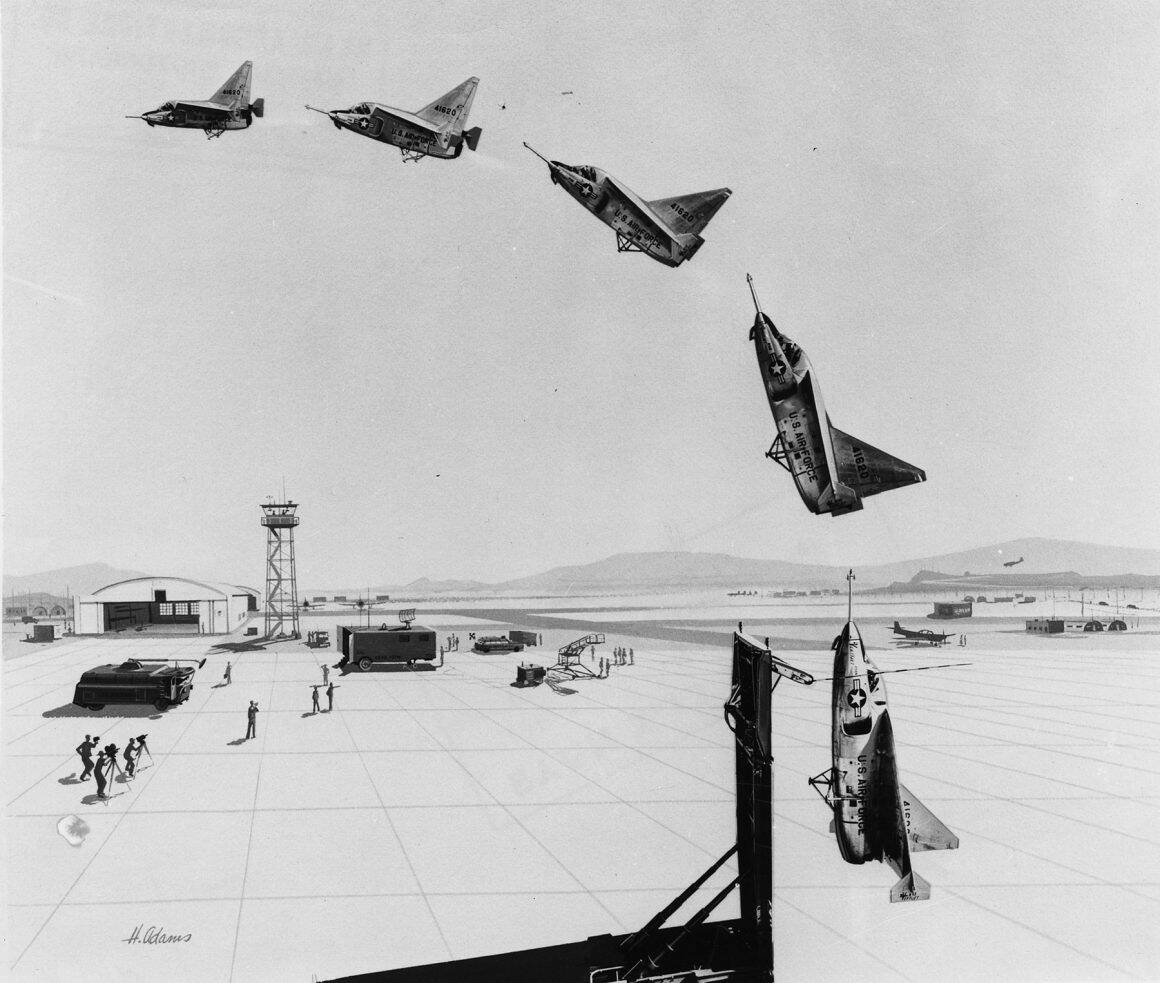
During flight, the Vertijet could shift from vertical to horizontal and fly. However, the Air Force found that its performance could not match that of other fighters. The Air Force also decided that its bases were essential for large-scale operations and that they could be protected and made survivable from enemy attack. These factors led to funding being cut off for the project in 1958.
Germans Experiment with Tail Sitter During World War II
The United States was not the first nation to study these aircraft. During the Second World War, Germany drew up plans for a VTOL tail-sitter aircraft called the “Triebflugel” or “thrust-wing fighter.” They were interested in using the aircraft as a fighter-interceptor to counter US and British bombers. The design featured three airfoils instead of true wings. The airfoils were mounted on a rotating collar, and they would have ramjet engines on their tips.
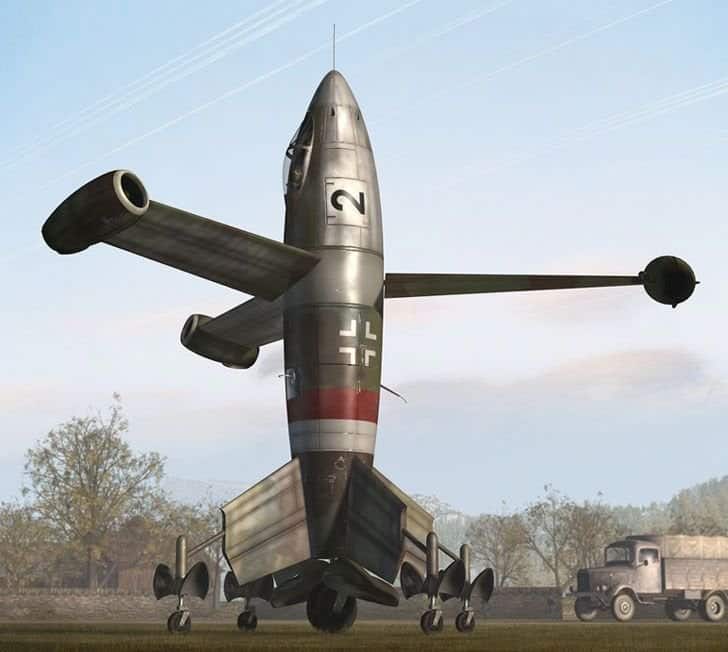
The Germans may have done some wind tunnel testing of the Triebflugel before the war ended, but they did not build a full-scale prototype. People are still curious about the unique design of the Triebflugel and often build it from plastic scale model kits.
French Tail-Sitter Design Another Failure for the Concept
France worked on its own tail-sitter aircraft design. In 1954, the Société Nationale d’Etude et Construction de Moteurs d’Aviation (SNECMA) began development of the C450 Coléoptère. The aircraft had a round, or annular, wing and an Altar D jet engine. The wing was 10.5 feet in diameter. The Coléoptère made its first flight on 3 May 1959 and completed nine test flights.
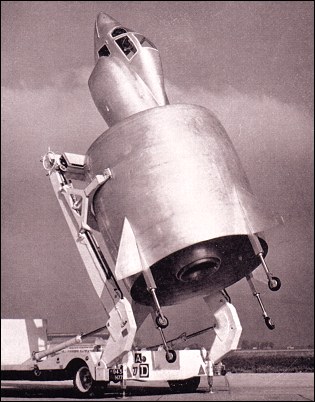
On its final mission, on 25 July 1959, the pilot was supposed to transition back to a hover at 2000 feet and descend to a landing. The tail-sitter aircraft could not achieve its hover and began dropping too quickly. It began to oscillate uncontrollably, and the pilot ejected at 150 feet, receiving serious injuries. The Coléoptère then rotated to a 50-degree angle, accelerated, and crashed. The French eventually followed the United States in moving away from the tail-sitters and shifted to the development of new fighter designs.
